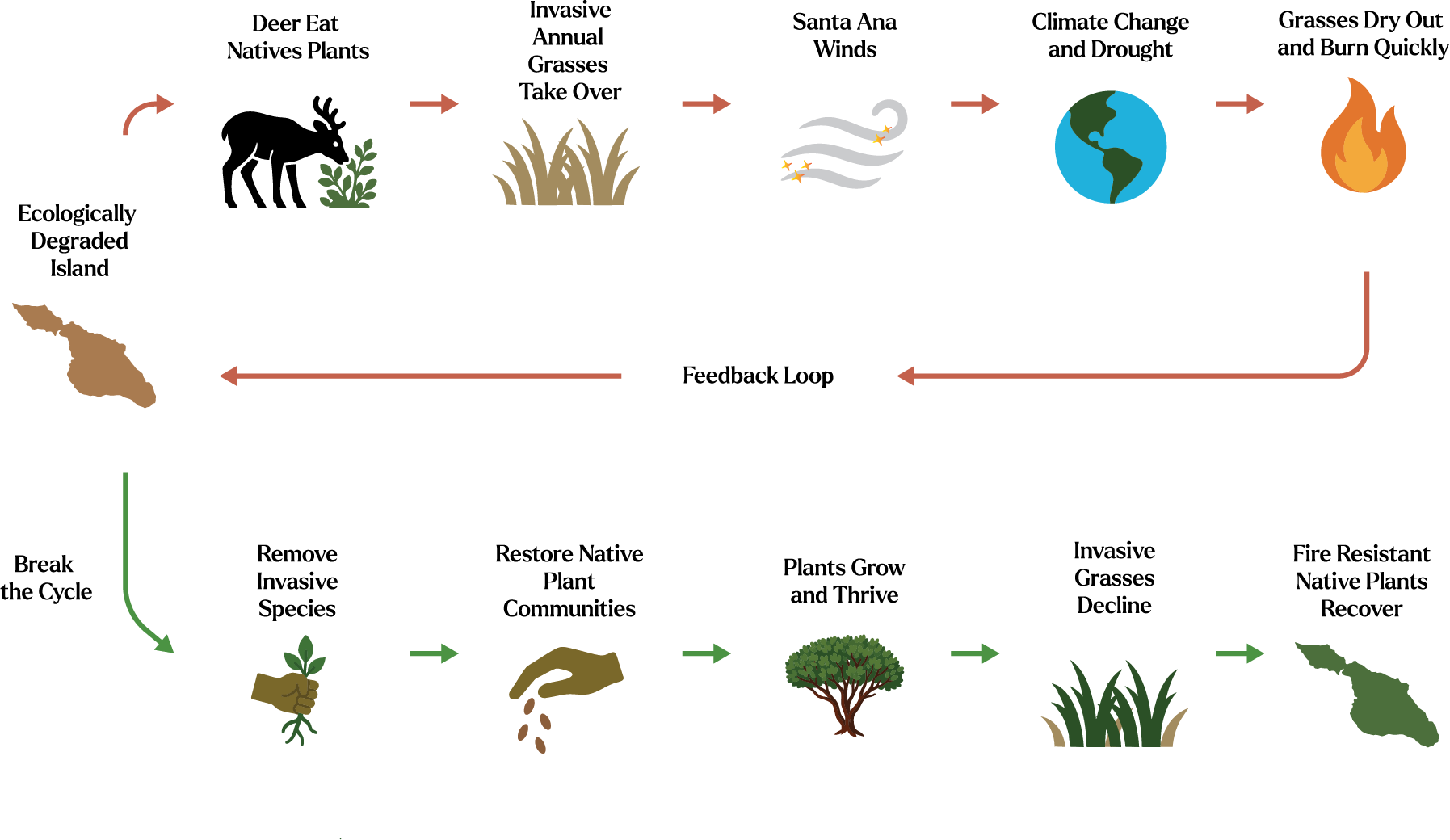Join us in protecting Catalina Island
Native Plants are Nature’s Firefighters
Catalina Island’s chaparral and woodlands rely on occasional, low-intensity fires to renew the landscape. But invasive species disrupt this balance, fueling more frequent and destructive fires. Protecting native plants restores balance and strengthens the Island’s resilience.
Wildfire and Native Plants
Catalina Island’s chaparral and woodlands rely on occasional, low-intensity fires. In fact, chaparral is adapted to burn periodically and contains oils that make it highly flammable when dry. These natural burns clear out dead brush and help certain native seeds sprout, renewing the landscape over time.
But invasive species disrupt this balance. They crowd out or consume native plants, increase fire risk and threaten rare species found nowhere else on Earth. Through the Catalina Island Restoration Project, the Conservancy is restoring native ecosystems to build a more fire-resistant, climate-resilient Island, now and into the future.
Fog Capture
Some native shrubs and trees harvest fog, capturing moisture on their leaves that drips to the soil, providing hydration during dry periods and increasing local humidity.
Fire Adapted Regeneration
Native species like manzanita are adapted to fire, sprouting from seed after burns and helping stabilize soil as the landscape recovers.
Invasive Species Suppression
Healthy native plant communities can outcompete invasive grasses, which dry out quickly, ignite easily and fuel more intense, frequent wildfires.
Evergreen Advantage
Evergreen natives like manzanita and toyon keep relatively moisture-rich leaves through much of the year, which can slow ignition compared to invasive grasses.

Wildlife Habitat Preservation
Native plants provide critical habitat and food for rare species like the Catalina Island fox, supporting biodiversity and maintaining the Island’s ecological balance.

Water Supply Protection
Native plants help protect Catalina Island’s water resources by reducing erosion, improving groundwater absorption and supporting the watershed that feeds Middle Ranch Reservoir—Avalon’s primary freshwater supply.
Breaking the Cycle
Why Invasives Intensify Wildfire Risk
Recent wildfires on the mainland are a stark reminder of how quickly wind-driven flames can escalate in dry, steep terrain. Today, ecosystems dominated by invasive and highly flammable annual grasses make up roughly 35% of Catalina Island’s landscape, creating the risk for a damaging fire cycle.
Think of this cycle like a bad habit: the more it happens, the harder it is to break.
After a fire, invasive grasses rebound quickly, like weeds in a garden, crowding out the slower-growing native plants that help resist future burns. Invasive deer accelerate this process by grazing down native seedlings, clearing the way for even more invasive grass to spread.
This dry, fast-burning fuel leads to hotter, more frequent and destructive fires, which in turn allow even more invasives to take hold. This self-reinforcing pattern is known as a positive feedback loop, and the longer it continues, the harder it becomes to stop.️🔥

